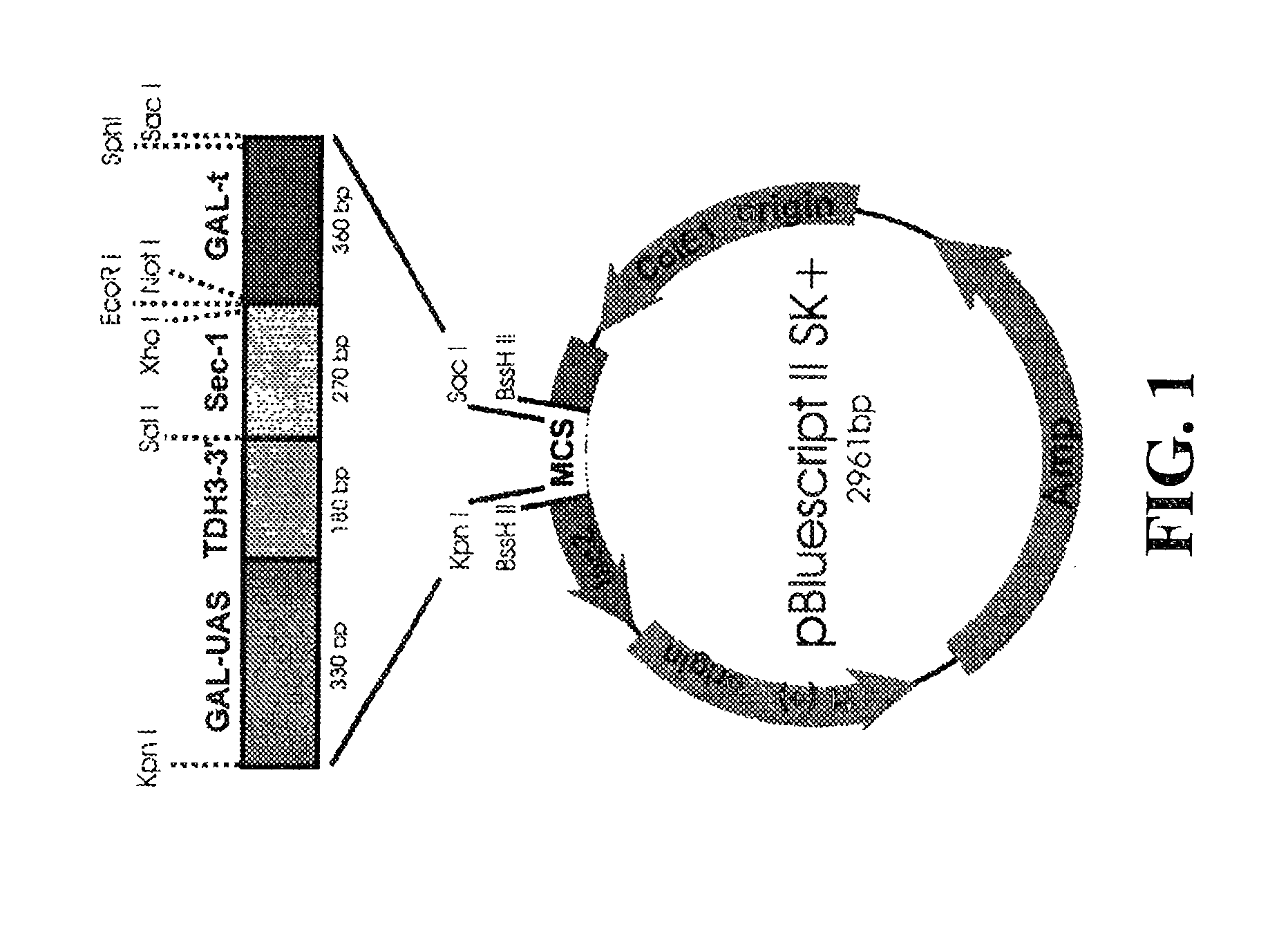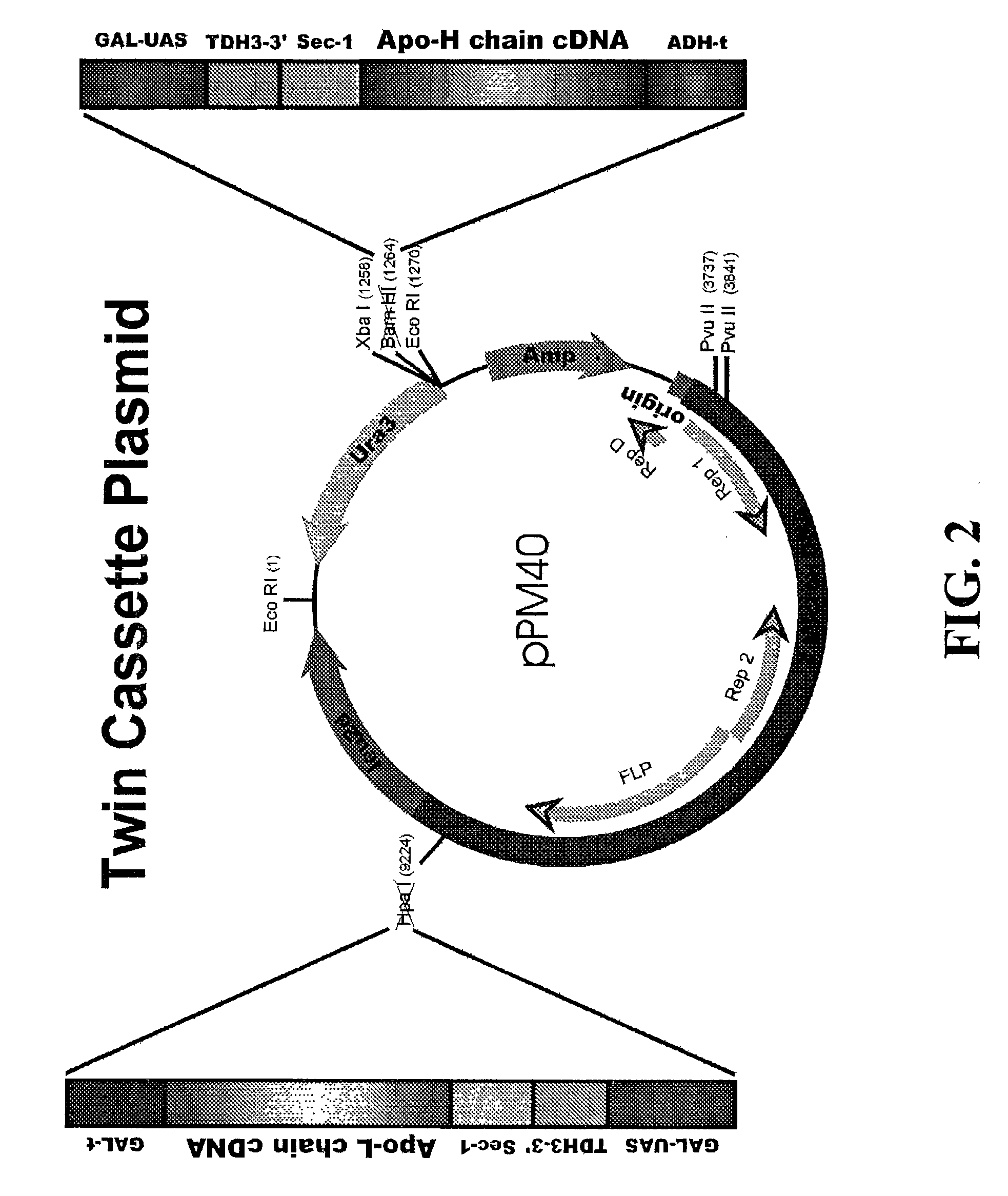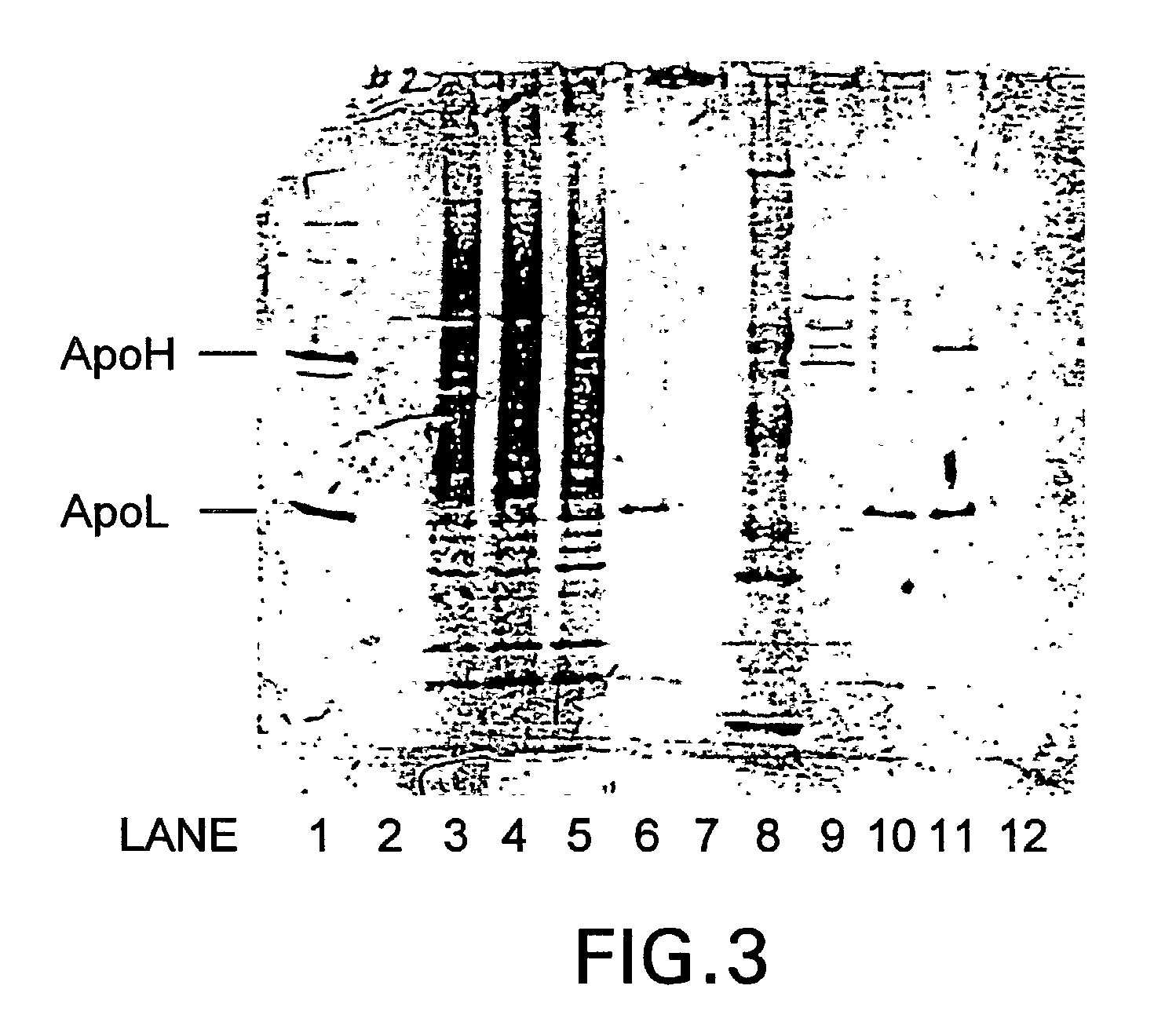Expression of heterologous multi-domain proteins in yeast
a multi-domain protein and yeast technology, applied in the field of expression of heterologous multi-domain proteins in yeast, can solve the problems of low yield of mabs, death of animals, and limitations of hybridoma cell lines, and achieve the effects of enhancing the yield of functional heterologous multi-domain proteins, cost-effective, and efficient production
- Summary
- Abstract
- Description
- Claims
- Application Information
AI Technical Summary
Benefits of technology
Problems solved by technology
Method used
Image
Examples
example 1
[0106] A. GAL-UAS
[0107] Broach et al. (Manipulation of Gene Expression, ed. Inouye, 1983) disclose a plasmid containing a GAL10 upstream activator sequence (UAS) (herein after, GAL-UAS). GAL-UAS was synthesized by using YEp51 plasmid DNA (Bitter and Egan, Gene 69:193 (1988) and nucleic acid primers containing appropriate cloning sites (shown in lower case):
1 5' primer: TtgagctcCCCAGAAATAAGGC- (SEQ ID NO:1) 3' primer: AGAAGGTTTTTTTAGcccgggCA- (SEQ ID NO:2)
[0108] B. ADH-2-UAS
[0109] ADH2 gene is derepressed after glucose is exhausted from the medium or when cells are shifted to a nonfermentable carbon source. ADH2 gene regulation may have advantages over other hybrid promoters because no exogenous inducer is needed for derepression which reduces the cost of induction. In addition, ADH2 derepression does not require specific host strains or mutations, so it can be used in a variety of yeast strains with varied genetic backgrounds. Optimal expression is obtained...
example 2
Terminator Production
[0117] A. ADH-Terminator
[0118] ADH1-transcription terminator (ADH-t) sequences were isolated from plasmid AAH5 (Ammerer, G., 1983, Methods in Enzymology, 101, pp. 192-201). Plasmid AAH5 was digested with BamHI and HindIII. The resulting 450 bp fragment was isolated by gel electrophoresis and further digested with SphI. The 320 bp fragment of ADH-t (HindIII / SphI) was used for cloning into pUC19 vector and the plasmid was labeled pUC19-ADHt. The restriction sites on the terminator can be altered by PCR.
[0119] DNA ligation and transformation of E. coli was carried out using standard procedures (Laboratory Cloning,: Sambrook, J., Fritsch, E. F., and Maniatis, T. eds., Cold Spring Harbor Laboratory Press, 1989, Second Edition). Transformed cells were plated on LB-media with 100 mg / L ampicillin. Plates were incubated at 37.degree. C. overnight.
example 3
Plasmids
[0120] Plasmid pUC19-GH contains a hybrid promoter which was constructed by the fusion of the upstream activating sequence (UAS) of GAL1-10 promoter (G) with the downstream promoter elements of the TDH3 promoter. The TDH3-3' promoter segment includes the transcriptional initiation site, the "TATA" sequences, capping sequence and RNA polymerase binding site. The hybrid promoter fragment was cloned into pUC19 as SacI / SphI fragment and the resulting plasmid was labeled pUC 19-H.
PUM
| Property | Measurement | Unit |
|---|---|---|
| molecular weight | aaaaa | aaaaa |
| OD | aaaaa | aaaaa |
| pH | aaaaa | aaaaa |
Abstract
Description
Claims
Application Information
 Login to View More
Login to View More - R&D
- Intellectual Property
- Life Sciences
- Materials
- Tech Scout
- Unparalleled Data Quality
- Higher Quality Content
- 60% Fewer Hallucinations
Browse by: Latest US Patents, China's latest patents, Technical Efficacy Thesaurus, Application Domain, Technology Topic, Popular Technical Reports.
© 2025 PatSnap. All rights reserved.Legal|Privacy policy|Modern Slavery Act Transparency Statement|Sitemap|About US| Contact US: help@patsnap.com



